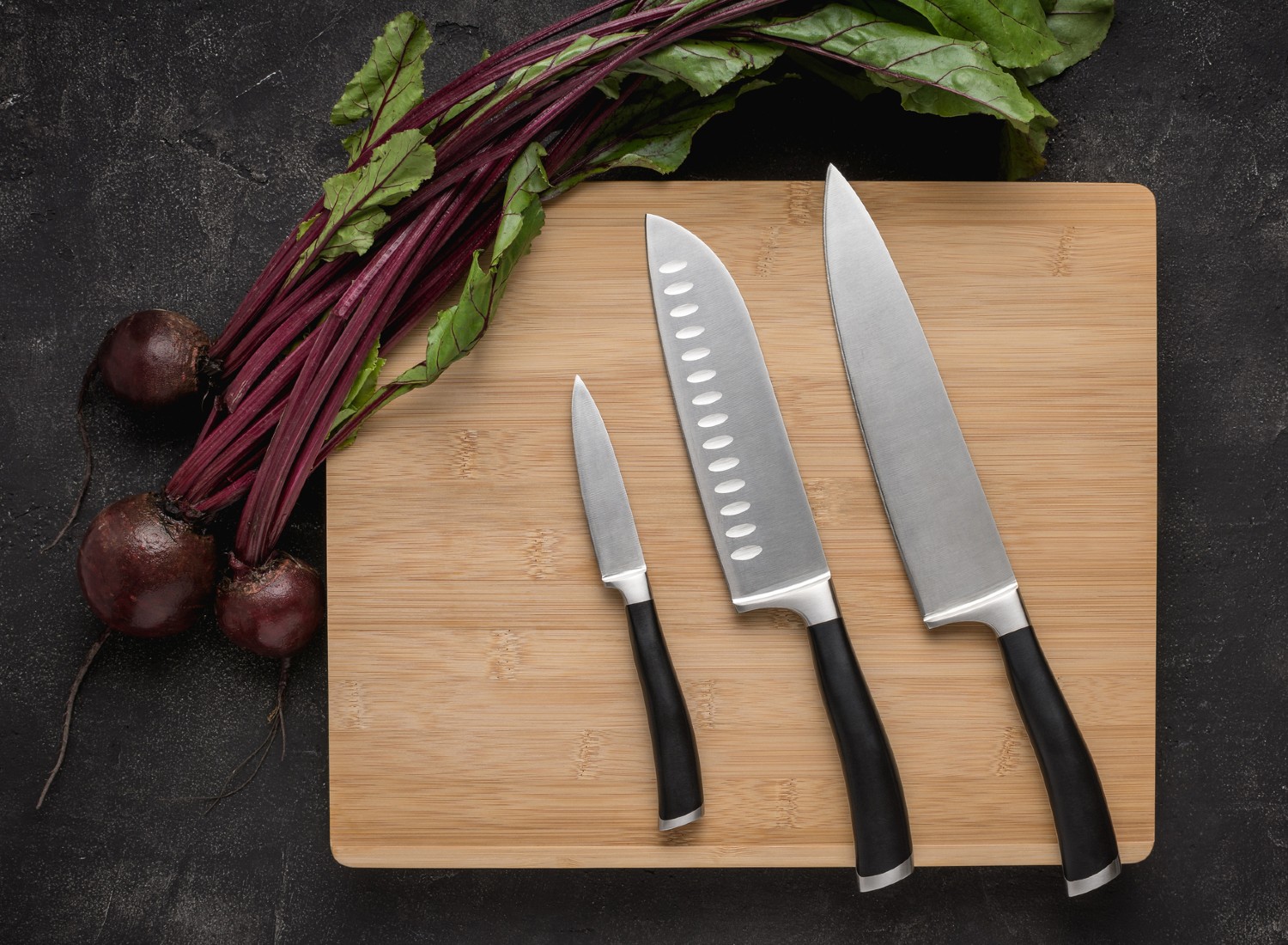Santoku vs Chef Knife: Which is the Better Buy?

Choosing a kitchen knife can be overwhelming with endless options, and the Santoku and chef knives often leave buyers confused. These knives have unique features, making it hard to decide for a knife enthusiast. This blog aims to simplify things by comparing the Santoku and chef knives. We’ll break down their characteristics, uses, and advantages, empowering you to make an informed decision.
Whether you’re a seasoned chef or a home cook, understanding the differences between these knives will help you choose the one that suits your kitchen needs best. This straightforward comparison aims to guide you toward a satisfying and worthwhile purchase for your culinary adventures.
What is a Santoku Knife?
A Santoku knife is a Japanese-style knife that translates to “three virtues” or “three uses”. It has a shorter and thinner blade than a traditional chef knife, with a length between five to eight inches. The blade is typically flat, with a rounded tip and a straight edge. Santoku knives are well- known for their versatility and are useful for chopping, slicing, and dicing meat, fish, and vegetables.
What is a Chef Knife?
A chef knife, also known as a cook’s knife or French knife, is an all-purpose kitchen knife that originated in France. It has a longer blade, typically between eight to ten inches, with a curved edge and pointed tip. The blade is also thicker than a Santoku knife, making it more suitable for heavy-duty tasks like cutting through bones or tough vegetables.
Comparison of Features
Blade Design and Sharpness
Santoku knives have a flat blade, while chef knives have a curved blade. This difference in shape affects the way each knife cuts through food. Santoku knives are better suited for precise and accurate cuts, such as julienning or mincing herbs. On the other hand, chef knives are specially designed for rocking motions, making them ideal for tasks like chopping or slicing.
In terms of sharpness, both knives are usually made from high-carbon stainless steel because of the material’s durability and ability to hold a sharp edge. However, Santoku knives have a thinner blade, making them slightly sharper than chef knives. This also means that they need to get sharpened with a knife sharpener more frequently. Both knives should also be hand-washed and dried immediately after use to prevent rusting.
Weight and Balance
Santoku knives are lighter in weight compared to chef knives, which makes them easier to maneuver and control. This is especially beneficial for people with smaller hands. However, the weight of a knife also affects its balance, and this can vary depending on the brand and model. Some Santoku knives may have a heavier handle, while others may have a heavier blade, so it’s important to try out different knives to find the one that feels most comfortable for you.
Versatility and Specialization
As mentioned earlier, Santoku knives offer versatile use and can handle various kitchen tasks. They excel in precision cuts and delicate slicing, making them suitable for tasks like cutting sushi or finely dicing vegetables. On the other hand, chef knives are better suited for heavy-duty tasks and can handle larger quantities of food. They are also more specialized in their cutting techniques and may not be as effective for certain types of cuts.
Which One Should You Choose?
The answer to this question depends on your personal preferences and the type of cooking you usually do. If you often cook Asian-inspired dishes that require precise cuts, a Santoku knife may be the better buy for you. However, if you prefer heavier and larger tasks like cutting through poultry or thick vegetables, a chef knife may be more suitable.
If you are just starting to build your kitchen knife collection, it may be beneficial to invest in both a Santoku and a chef knife. This way, you will have the versatility of a Santoku for delicate tasks and the strength of a chef knife for heavier tasks. It’s also important to consider the quality and brand of the knives you get.
Conclusion
Both Santoku and chef knives have their own unique features and benefits, making it difficult to declare one as the better option. Ultimately, the best choice will depend on your personal preferences, cooking style, and budget. It’s important to carefully consider these factors before purchasing to ensure you choose the right knife for your needs. Whichever option you choose, make sure to take proper care of your knife to maintain its sharpness and longevity in the kitchen.
